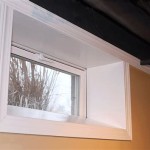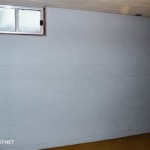How To Seal Hairline Cracks in Basement Walls
Hairline cracks in basement walls are a common sight, and while they may seem insignificant, they can be a symptom of underlying issues. These cracks can allow moisture to penetrate the wall, leading to mold growth, structural damage, and even health problems. Fortunately, sealing these cracks is a relatively simple DIY project that can prevent further damage and improve the overall condition of your basement. This article will guide you through the process of identifying, preparing, and sealing hairline cracks in your basement walls.
Identifying the Cause of Hairline Cracks
Before sealing any cracks, it's crucial to understand their cause. Knowing the source will help you determine the best course of action and prevent future cracking. Some common causes of hairline cracks include:
- Foundation Settlement: As your home settles over time, the foundation can shift, causing slight cracks in the walls. This is particularly common with older homes or those built on unstable soil.
- Soil Expansion and Contraction: Changes in moisture levels in the surrounding soil can cause expansion and contraction, putting pressure on the foundation and resulting in cracks.
- Thermal Movement: Temperature fluctuations can affect the expansion and contraction of concrete, leading to hairline cracks, especially in areas with extreme temperature changes.
- Vibrations: Heavy traffic, nearby construction, or even vibrations from appliances can induce stress on the foundation, causing cracks.
If you notice large cracks, significant movement, or widening cracks, it's best to consult a structural engineer. They can assess the severity of the problem and recommend appropriate solutions.
Preparing for Sealing
Once you've identified the cause and determined that the cracks are not a sign of severe structural problems, you can proceed with sealing them. This process involves cleaning the cracks and preparing the surface for the sealant.
- Clean the Cracks: Use a wire brush, vacuum cleaner, or compressed air to remove loose debris, dirt, and dust from the cracks. This ensures that the sealant adheres properly.
- Widen the Cracks: For deeper cracks, use a utility knife or a small chisel to slightly widen the cracks to allow better sealant penetration and a stronger bond.
- Moisture Control: If you suspect moisture intrusion is a contributing factor to the cracks, address the source of moisture before sealing. This may involve improving drainage around the foundation or addressing leaks in the basement.
Sealing the Cracks
With the cracks cleaned and prepared, it's time to choose and apply the appropriate sealant. Several sealant options are available, each with its own benefits and disadvantages:
- Acrylic Caulk: This is a popular and affordable option for sealing hairline cracks. It's easy to apply, flexible, and paintable, but it may not be as durable as other sealants.
- Silicone Caulk: Silicone caulk offers superior moisture resistance and flexibility compared to acrylic caulk, making it suitable for areas prone to water exposure. However, it's more expensive and may not be paintable.
- Epoxy-Based Crack Repair Mortar: Epoxy-based mortars provide excellent strength and adhesion for deeper cracks. They are resistant to water, chemicals, and temperature changes but require more preparation and may have a longer drying time.
The choice of sealant depends on the size and location of the cracks, the level of moisture exposure, and your budget. When applying the sealant, follow these steps:
- Apply the sealant: Use a caulk gun to apply the sealant neatly into the crack. Ensure you fill the entire crack and slightly overfill it to create a smooth surface.
- Smooth the sealant: Use a damp finger or a putty knife to smooth out the sealant, removing any excess material. For epoxy-based mortars, use a trowel to apply and smooth the material.
- Allow the sealant to cure: Allow the sealant to cure fully as per the manufacturer's instructions. This ensures the sealant achieves its full strength and effectiveness.
Regularly inspect your basement walls for new cracks and re-apply sealant as needed. By addressing hairline cracks promptly and taking steps to prevent future cracking, you can protect your basement from moisture damage and maintain its structural integrity.

How To Repair A Large Basement Wall Crack Stop Leaking Permanently

How To Seal Basement Cracks

10 Types Of Basement Foundation Cracks You Should Know

Basement Wall Crack Causes Symptoms And When To Worry

Diy Foundation Crack Repair Kit Urethane Radonseal

How To Seal Basement Cracks

Foundation Crack Repair How To Permanently Fix

Foundation Crack Repair Basement Wall Floor Leak Fix Maine Crackx

10 Types Of Basement Foundation Cracks You Should Know

Repairing Cracks In Walls How To Guide
Related Posts







